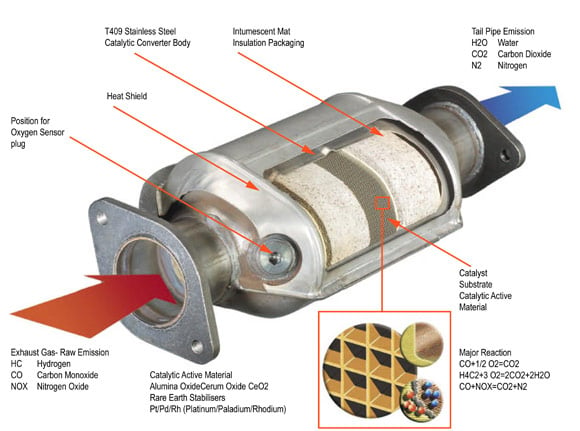Catalytic Converter |
Carbon Capture |
|---|
Catalytic Converter
There are millions of cars on the road in the United States, and each one is a source of pollution. The problem was solved back in 1975 when the catalytic converter was invented. The catalytic converter turns harmful gasses into less harmful gasses before they leave the car's exhaust system. Catalytic converters reduce carbon monoxide, which is a harmful gas that no one can see or smel lbecause it is invisible and deadly (very dangerous). It also converts hydrocarbons, which are mostly made from evaporated, unburned fuel and are a component in smog.
This device also will convert nitrogen oxide which is a contributor to smog and acid rain. It will also cause eye irritation. In chemistry, a catalyst is a substance that causes a chemical reaction without itself being affected. In the catalytic converter there are 2 different catalysts working. They are a reduction catalyst and an oxidation catalyst. Click here for details.
Carbon Capture
Carbon Capture and storage is a technology that involves the removal of carbon dioxide before or after fossil fuels are burned. The goal of carbon capture is to reduce the amount of carbon dioxide that is released into the atmosphere. In post-combustion carbon dioxide is trapped before the other flue gasses can affect it by passing the gas through an absober that contains a solvent such as ammonia. In pre-combustion, carbon capture is applied to coal, oil, and natural gas which are heated into clean oxygen, and end up as a mix of carbon monoxide, and hydrogen. Click here for details.


